2022 Pre-Congress Workshops
Full and half day pre-conference workshops are planned for Sunday, September 11, 2022
2-day McGill Laboratory Dissection workshop September 10th & 11th
All workshops are prior to the main Congress proceedings
Full Day Workshops
Neurophysiological Mechanisms of Myofascial pain:
The Role of Central Sensitization and Neurogenic Inflammation in the Pathophysiology of Myofascial Pain Syndrome
by John Srbley
Pathophysiology of Deep Fascia:
Biochemical Alteration of the Extracellular Matrix and its Role in Sensitization
by Antonio Stecco
Spinal Segmental Sensitization in Myofascial Pain Syndrome:
Integrating Pain Mechanisms with Objective Physical Findings and Treatment Strategies
by Jay Shah
WORKSHOP DESCRIPTION:
This comprehensive session presents knowledge emerging from the pain sciences in a clinically accessible way. It will explore the roles that active myofascial trigger points (MTrPs), the three dimensional fascial system and its pathophysiology, the dynamic nature of sensitization, and the presence of quantitative, reproducible physical findings play in the evaluation and management of chronic myofascial pain and dysfunction. Spinal segmental sensitization (SSS) is a hyperactive state of the dorsal horn caused by persistent nociceptive bombardment. Painful MTrPs and stiff deep fascia are common sources of persistent nociception that cause SSS and chronic myofascial pain. Conversely, maladaptive changes in subcortical structures and dysfunctional descending inhibition may cause somatic tissue abnormalities. Common peripheral manifestations include dermatomal allodynia/hyperalgesia, sclerotomal tenderness, MTrPs within the affected myotomes, and dense deep fascia.
Non-pharmacological treatments like dry needling, fascial manipulation, and acupuncture will be discussed. These techniques aim to deactivate MTrPs, decrease fascial stiffness, normalize the threshold of nociceptors, desensitize affected segments, and neuro-modulate subcortical dysfunction, providing long-term pain and symptom relief. The underlying physiology and clinical application and interpretation of the Windup Ratio (WUR) and the Mechanical Pain Threshold (MPT) Quantitative Sensory Testing (QST) outcomes for the assessment of central sensitization and the chronic myofascial pain patient will be discussed. The diagnostic and treatment techniques presented in this seminar apply to the management of various chronic musculoskeletal pain conditions. This underlying rationale and the resultant analytical process guide the clinician to identify the active MTrPs to be treated and reduce nociceptive bombardment from irritated nociceptors.
WORKSHOP PRESENTER(S):
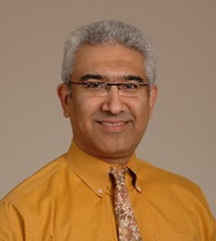 Jay P. Shah MD, clinical investigator in the Rehabilitation Medicine Department at the National Institutes of Health
Jay P. Shah MD, clinical investigator in the Rehabilitation Medicine Department at the National Institutes of Health
Jay P. Shah is a physiatrist and clinical investigator in the Rehabilitation Medicine Department at the National Institutes of Health in Bethesda, Maryland USA. His interests include the pathophysiology of myofascial pain and the integration of physical medicine techniques with promising complementary approaches in the management of neuro-musculoskeletal pain and dysfunction. He and his co-investigators have utilized novel microanalytical and ultrasound imaging techniques that have uncovered the unique biochemical milieu and viscoelastic properties of myofascial trigger points and surrounding soft tissue. Jay is a well-known lecturer on mechanisms of chronic pain, myofascial pain, neuro-anatomical acupuncture techniques and other related topics. His presentations integrate the fascinating knowledge emerging from the basic and clinical pain sciences in order to improve evaluation and management approaches to neuro-musculoskeletal pain and dysfunction. Jay was selected by the American Academy of Pain Management as the 2010 recipient of the Janet Travell Clinical Pain Management Award for excellence in clinical care and by the National Association of Myofascial Trigger Point Therapists as the 2012 recipient of the David G. Simons Award for excellence in clinical research.
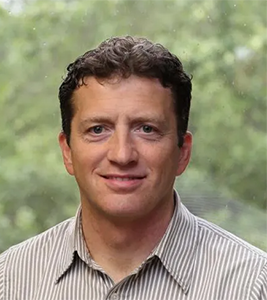
Dr John Z Srbely DC PhD graduated from the Canadian Memorial Chiropractic College (1992) and certified in Clinical Acupuncture (2000). He received his PhD in biomechanics and neurophysiology in 2008 from the University of Guelph and is a full time Associate Professor with the Department of Human Health and Nutritional Science (HHNS), College of Biological Sciences, University of Guelph (Guelph, Ontario, Canada). He held a Canadian Chiropractic Research Foundation Research Chair in Spine Mechanics and Neurophysiology (2008-2013). He is currently the Director of the HHNS Neuromuscular Health and Chronic Pain clinical-research facility where he is pursuing his primary research interests in the study of the neurophysiologic mechanisms and management of chronic pain. The central theme of his research program is the study of central sensitization and neurogenic inflammation, and their role in the clinical manifestation of chronic musculoskeletal disease including myofascial pain, osteoarthritis, and chronic degenerative joint/spine disease.

Antonio Stecco is an Assistant Professor at Rusk Rehabilitation, New York University. Physiatrist, President of Fascial Manipulation Association since 2010; Assistant to the President of the International Society of Physical Medicine and Rehabilitation (ISPRM) from 2012 to 2014; President of International Myopain Society since 2020. Scientific activity devoted to the study of the human fasciae from a macroscopically, histologically and physio-pathologically point of view. He personally made over 100 cadaver dissections for research. From 2007 he organized and personally held theoretical-practical courses about the Fascial Manipulation method in all the five continents. Author of more than 50 in extensor papers about the fascia. Co-Authors of 5 books and co-author of different chapters of international books published by Elsevier.
WORKSHOP DESCRIPTION:
Learn to see and resolve body-wide postural patterns through understanding the myofascial force transmission through the body‘s membranes. This workshop reviews the myofascial meridian system, and explores ’meaning‘ in stability, movement, and biopsychology, with emphasis on the role of the ’core‘ structures. Working with established fascial properties, this workshop explores the ’feel‘ of specific fascial and myofascial release work in both manual therapy, stretch, and training contexts.
WORKSHOP PRESENTER(S):
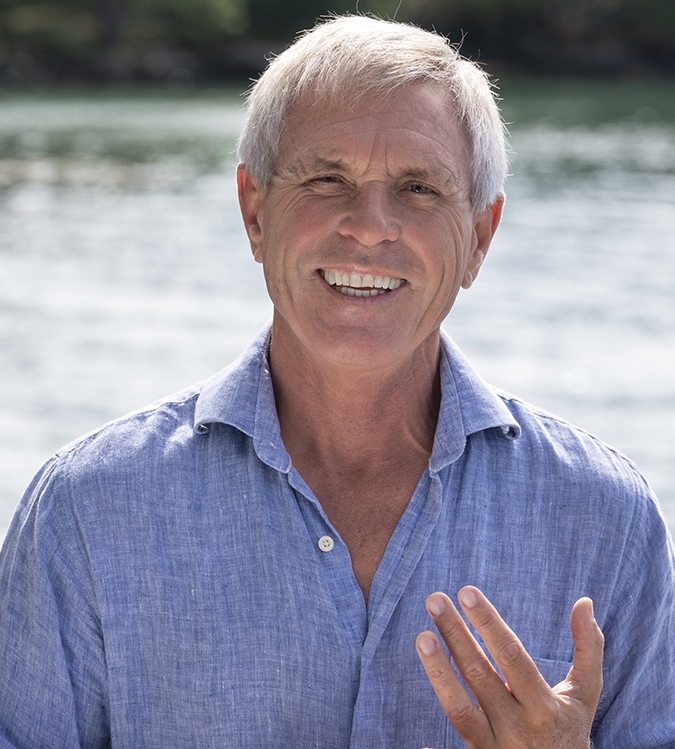 Thomas Myers, LMT, BCSI
Thomas Myers, LMT, BCSI
Tom Myers is the author of Anatomy Trains (4th ed, Elsevier 2020), Fascial Release for Structural Balance (2nd ed. North Atlantic 2017) and numerous articles, chapters, and video programs. Tom has been in continual practice since 1974, in a variety of cultures and clinical settings. Through Anatomy Trains LLC, Tom and his team provide Structural Integration certification and continuing professional education for a variety of professions worldwide.
WORKSHOP DESCRIPTION:
Inflammation is involved in nearly all musculoskeletal complaints (including myofascial and joint pain, muscle soreness, neuropathies, neoplastic/chronic pain, and many more). But for fascia-informed manual therapists, working with inflammation can be a
real puzzle. Sometimes our work can clearly help, but at other times, hands-on work can worsen inflammatory reactions. What makes the difference? And, how can our emerging understanding of fascia and the interstitium, as well as pain and the brain, inform our hands-on work with inflammatory conditions? Join author, teacher, manual therapy practitioner, and Certified Advanced Rolfer Til Luchau as he helps clarify inflammation‘s complexity, and offers practical suggestions for practitioners‘ hands-on work. Using recent insights from ongoing fascial, pain, and inflammation research, as well as the clinical experience, input, and tips from a range of expert clinicians, topics will include:
- Understanding inflammation‘s types, signs, symptoms, stages, causes, and resolution
- The role of manual therapy and hands-on work
- A toolbox of hands-on approaches and techniques
This special participatory workshop will include theory, discussion, and hands-on practice. Movement therapists are also welcome and will find relevance to their work.
WORKSHOP PRESENTER(S):
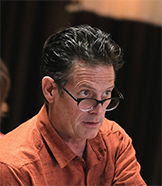 Til Luchau, Certified Advanced Rolfer Advanced-Trainings
Til Luchau, Certified Advanced Rolfer Advanced-Trainings
Til Luchau is a popular manual therapy writer and teacher. As a Certified Advanced Rolfer™, Til was on the faculty of the Dr. Ida Rolf Institute® for 20 years, where he served as Coordinator and Faculty Chair of the Foundations of Rolfing Structural Integration program, and where in the early 1990's he originated "Skillful Touch Bodywork" (the Rolf Institute's training and practice modality). His Advanced Myofascial Techniques books (Handspring Publishing) have been published in six languages, and over one hundred of his articles about manual therapy have been published in magazines and peer-reviewed professional journals in Australia, Brazil, Canada, New Zealand, Poland, the UK, and the USA. Formerly a resident practitioner at the Esalen Institute, Chair of the Dr. Ida Rolf Institute®'s Teacher Training Committee, and Adjunct Faculty member of Naropa University's Somatic Psychology Department, he has trained thousands of practitioners in his popular courses in over twenty countries spread across six continents. He is the Director of Advanced-Trainings.com.
WORKSHOP DESCRIPTION:
The microscopic aspects of the fascia will be deeply explored. After an introduction about cellular and molecular components of the fascial tissue and the basic principles on how to prepare a sample for histology and how to use a microscope, all the fascial structures will be analyzed in subgroups by light microscopy. The practical sessions will be preceded by an introductive lesson, then guided by the principal microscope used by the presenter, while each group will analyze the samples with the help of assistants. All the sections will
be provided by our group of Padova University, creating a unique opportunity to view the samples that led to the main publications and studies of our team, such as the identification of the fasciacytes.
In particular, the composition of the fibrous and the loose tissue component will be analyzed. The cells that compose the fascial tissue (fibroblasts, fasciacytes, myofibroblasts, telocytes, adipocytes, nerve fibers) will be carefully described. A session will be dedicated to the stainings to visualize the innervating components. Furthermore, the expression of receptors by the cells (hormone receptors, endocannabinoid receptors) will be analyzed. By this way the participants will learn how to distinguish the principal components of the fascial tissue.
WORKSHOP PRESENTER(S):
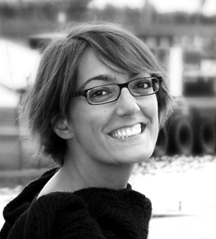 Caterina Fede, PhD
Caterina Fede, PhD
Caterina Fede graduated in Biotechnology and in Health Biology and received her Ph.D. in Environmental Medicine, University of Padova. Since 2008 she has been active in university research and teaching, in the field of Cell Biology, Molecular Biology and Histology, and actually she has a post-doc research grant at the Institute of Human Anatomy of the University of Padova, in the research team of Prof. Carla Stecco. She has participated in numerous national and international conferences as presenter, including Fascia Research Congress 2018, Australian Fascia Symposium 2020, and she collaborates in the organization of the Winter School Fascial Anatomy (scientific director Prof. Carla Stecco). She is author of numerous researches on cellular and molecular aspects of fascia, in particular the quantification of hyaluronan, the characterization of fasciacytes and the regulation of the fascia extracellular matrix according to hormonal, chemical, mechanical stimuli. Winner of the 2019 University Cooperation call, as short-term scholar at the Perelman School of Medicine, University of Pennsylvania, with a project about the visceral fascia (with Prof. Wells RG and Prof. Theise N., New York University School of Medicine). Winner of the "Fascia Research - Young Scientist Award", conferred in August 2020 by the Fascia Research Charity.
WORKSHOP DESCRIPTION:
Fascia plays a crucial role in supporting and maintaining health. The focus of this workshop will be on maintaining musculoskeletal health of dogs performing in various dog activities, as well as treating common orthopedic injuries or conditions. Information on myofascial meridians in dogs will be presented, and how they are used in the author's practice to treat and maintain optimal mobility in dogs. Photographs and videos taken from the author's practice, as well as hands on demonstrations on ourselves and on dogs will help to further understanding on using fascial releases and balancing to maintain health. Connections with animal chiropractic (veterinary spinal manipulation), and veterinary acupuncture will also be touched upon. This workshop is suitable for veterinarians and those licensed to work with animals. Chiropractic or acupuncture experience is not essential but will be helpful, as will a thorough knowledge of dog anatomy. Some handouts will be provided, and some reference materials will be present at the workshop. Participants are welcome to bring their own references.
WORKSHOP PRESENTER(S):
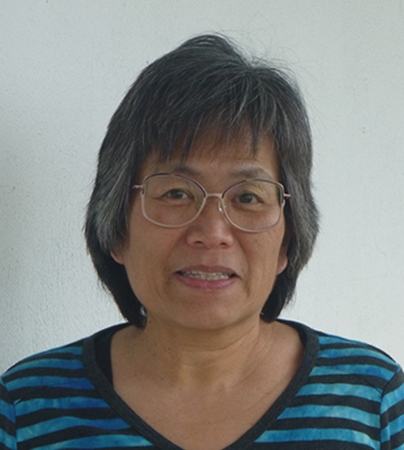 Laura Lee DVM CVA (IVAS), CAC (AVCA) Acres Animal Hospital
Laura Lee DVM CVA (IVAS), CAC (AVCA) Acres Animal Hospital
Dr. Laura V. Lee is an integrative veterinarian practising in Nova Scotia, Canada. A graduate of the Ontario Veterinary College in 1979, she worked in a conventional mixed animal practice for 15 years before buying her own practice in Dartmouth, Nova Scotia. A life-long equestrian, one of her own horses sustained a serious neck injury, which was the catalyst for beginning the study of alternative therapies, starting with acupuncture, then animal chiropractic, obtaining certification in both. Raising two children as a single parent, and running a busy small animal and equine veterinary practice did not leave much time for further certifications, but Laura has continued studying through various short courses and seminars. Chinese herbal medicine and food therapy are also used in her practice. She has been a speaker at the American Veterinary Chiropractic Association Annual Conferences in 2014, 2015, 2017, 2019 and at the 19th International Annual TCVM Conference in 2017. She has a peer-reviewed publication "Non-Surgical Treatment for Cranial Cruciate Ligament Rupture in Senior Dogs: A Retrospective Case Series" in the AJTCVM February 2019. Over the past 13 years, she has been developing a system of fascial therapy using myofascial meridians in dogs and horses. This system is in use in her own practice, as a standalone therapy, and also in conjunction with animal chiropractic and acupuncture. She has presented this system in a series of three webinars for the College of Integrative Veterinary Therapies (CIVT) in 2021. Besides working with animals, her other passions include horseback riding, being with her horse and Siamese cat, photography, and music, playing jazz improvisation and Brazilian samba percussion.
WORKSHOP DESCRIPTION:
Ultrasound (US) is a useful tool for clinicians, manual therapists and other body workers. US offers a non-invasive and real-time imaging method of the musculoskeletal system. Fascial thickening and pathological shear motion are linked to pain syndromes. Apart from diagnostic use, the method can therapeutically be used for neurophysiologic feedback. Most notably, improvement of proprioception has been shown to reduce pain.
The traditional method of defining acupuncture sensation (de qi) through subjective patient reports is widely accepted. Still, there is a broad range of quantifiable neurophysiological changes occurring in direct consequence to the needle stimulus. Ultrasound constitutes an ideal medium for evaluating the biomechanical effects of needle manipulation on tissue, as it yields both images of tissue morphology and biomechanical information. Previous research has shown a strong connection between acupuncture sensation and both tissue depth and needle rotation. The intensity of the needle stimulation seems to correlate with the effect size. In addition, the role of the fascia is understood to promote so called mechanotransduction, i.e. forwarding and transmission of needle stimuli, to other body regions via connective tissue. In terms of myofascial disorders this may explain why needling of the legs alleviates back pain. Consequently, innervation and histologic structure of the derma- fascio- and myotomes where the needle is inserted, can be considered a key in mediating the acupuncture effects. The workshop is mainly hands-on. The participants will learn:
- the principles of US and basic sonoanatomy
- how to investigate fascia by US and detect gross fascial pathology
- the use of US as a quick and effective biofeedback method
- about the localization of acupuncture points relevant to treat myofascial disorders
- to distinguish different stimulation techniques by means of tissue response
- about the sustainability of acupuncture effects on fascia
- to use ultrasound as a tool to diagnostically assess tissue before, during, and after treatment
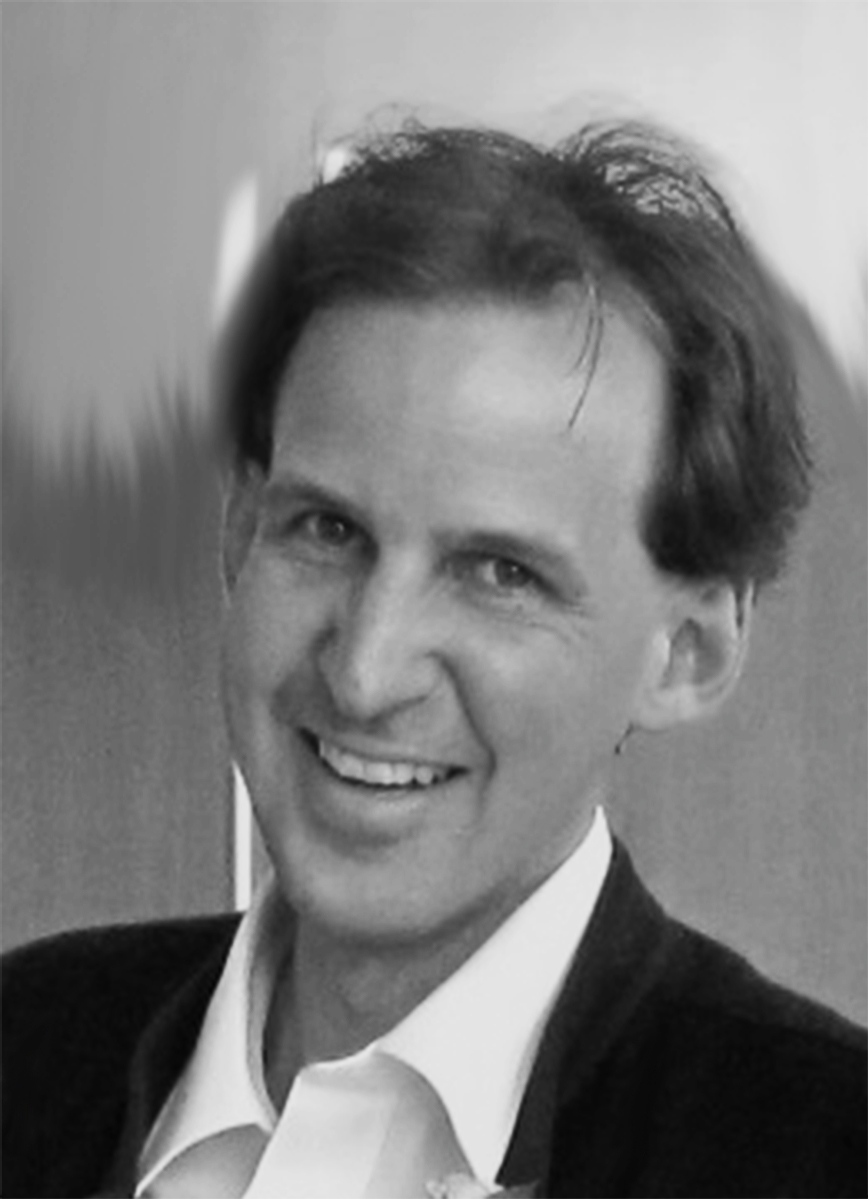 Johannes Fleckenstein MD, PhD, Senior Lecturer, Sports Medicine, Goethe-University Germany
Johannes Fleckenstein MD, PhD, Senior Lecturer, Sports Medicine, Goethe-University Germany
Dr. Johannes Fleckenstein is a specialist anaesthesiologist, acupuncturist and sports physician who graduated at the University of Regensburg, Germany. His research activity ranges from electrophysiology of peripheral nerves and the functioning of neural ion channels to the somatosensory description of different types of pain. He investigated the physiologic effects of different analgesic treatment principles, and experimented in the field of acupuncture techniques, fascia and their mechanism. Dr. Fleckenstein gained profound knowledge in applied and exercise physiology, and is currently trying to link clinical and experimental human pain research, exercise and myofascial pain. He authored more than 100 publications and is the first author of about half of them.
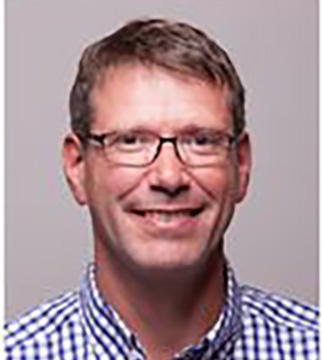 Werner Klingler MD, PhD, Professor and Director, Anaesthesiology, Sigmaringen Ulm University, Germany
Werner Klingler MD, PhD, Professor and Director, Anaesthesiology, Sigmaringen Ulm University, Germany
Werner Klingler studied medicine at the University of Ulm and at the Guy's and St. Thomas Medical School in London. He completed his training in Applied Physiology at the University of Ulm under the supervision of Dr. med. Frank Lehmann-Horn, a pioneer in muscle research and one of the world's leading experts in myofascial diseases. There he also completed his specialisation as a clinical anaesthetist with training in complex pain medicine. Klingler is an active clinician, heads the neurophysiological muscle laboratory and is co-founder of the Fascia Research Group in Ulm. He was a founding member of the first Fascia Research Conference at Harvard University in 2007, chairman of the Fascia Research Conference in Berlin 2018 and host of an ongoing series of fascia summer schools and connective tissue conferences. Klingler has received several awards, including the Young Investigator Award of the Federation of European Physiological Societies, the World Congress on Low Back Pain Award and the Vladimir Janda Award for Musculoskeletal Medicine.
Practical touch therapy applications will be provided supported by evidence-based explanations concerning appropriate manual and movement interventions for effective therapeutic outcomes. This bespoke presentation involves an overview of the living tensegrity- model and its impact on manual and movement therapies. John Sharkey will provide a dynamic practicum translating fascia science into manual and movement applications. The workshop will intersperse fascia science, theories, research-based evidence, and a number of "real time kinesthetic experiences" to support tactile knowledge of the true nature of our fascial net architecture.
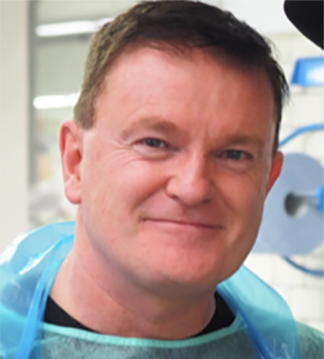 John Sharkey, Clinical Anatomist
John Sharkey, Clinical Anatomist
John Sharkey is a Clinical anatomist, European Neuromuscular Therapist and international educator, author, and an accepted leading authority in fascia science. A graduate of the University of Dundee, University of Liverpool, and University of Chester John completed undergraduate and post-graduate studies in the areas of exercise physiology, clinical anatomy and holds a post-graduate certificate in education. John is delighted to play the role of assistant to the directors of the Fascial Net Plastination Project (FNPP). He is currently the programme leader of the biotensegrity focused Thiel soft fix cadaver dissection courses at the department of anatomy and human identification, Dundee University, Scotland.
Half Day Workshops - Morning
WORKSHOP DESCRIPTION:
Mental imagery (MI) is a fundamental human skill of creating and using images and metaphors in the mind. Being an active, cognitive process, MI can affect a variety of motor and cognitive functions, including attentional focus, movement biomechanics, and psychological aspects. Traditionally, MI training has focused on muscle tissue and research has investigated its beneficial effects on power, strength, range-of-motion, and flexibility. However, little referral has been devoted to its potential effects on fascia. Building on scientific literature suggesting anatomical, physiological, and functional relationships and similarities between muscular and fascial tissues, we provide a science-based conceptualization for the use of MI for promoting fascial awareness and enhancing its mobility, thus benefiting motor performance and functioning. Fascial Dynamic Neuro-Cognitive Imagery (FDNI) is a codified framework of MI tools and movement applications to motor performance with the goals of gaining better embodiment and exploitation of fascial structure and biomechanics. The evidence-based approach of FDNI is based on findings from the fields of fascial anatomy and physiology, biomechanics, motor learning, and pedagogy. Training in DNI has shown promise in improving motor and non-motor aspects of performance in dancers and people with Parkinson’s Disease. FDNI ties together fascia-specific cognitive and motor elements, thus emphasizing the role of fascia in motor and cognitive aspects of motor performance and rehabilitation.
WORKSHOP PRESENTER(S):
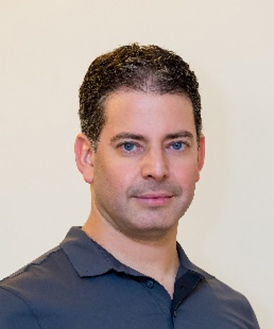 Dr. Amit Abraham, Emory University School of Medicine
Dr. Amit Abraham, Emory University School of Medicine
Dr. Abraham is a musculoskeletal physical therapist specializing in dance and sports injuries and rehabilitation. Dr. Abraham is an assistant professor (tenure track) in the Department of Physical Therapy at Ariel University (Israel). Dr. Abraham directs the Mental Imagery & Human Embodied Potential Lab, where his research team studies basic and applied aspects of mental imagery and their associations with human motor and cognitive functions. Dr. Abraham's research focuses on, among others, motor imagery and dynamic neuro-cognitive imagery (aka "the Franklin Method").
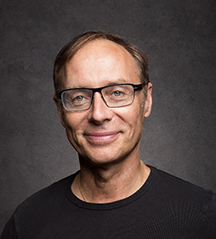 Eric Franklin, Franklin Method Institute
Eric Franklin, Franklin Method Institute
Eric is the founder of the Franklin Method Institute, and he has spent decades developing and optimizing the Franklin Method – a ground-breaking training method designed to unlock the body’s full potential through exercise, imagery and anatomical understanding. A qualified sports scientist, dancer, choreographer and movement pedagogue, Eric Franklin is regarded as an expert in imagery-based movement pedagogy and Dynamic Neurocognitive Imagery (DNI)™. During his long career, Eric has worked as a guest lecturer at the mdw Vienna, Juilliard School New York, NYU, Royal Ballet School London and he is also a member of the International Association of Dance Medicine and Science (IADMS).
WORKSHOP DESCRIPTION:
Evidence suggests that the brain may control the limbs by scaling, offsetting, and temporally dilating fundamental movements encoded in the sensorimotor system. These patterns of motion have been developed into the concept of synergies, which can be defined as a collection of relatively independent degrees of freedom that behave as a single functional unit. Fascia plays an important role in these tasks. Through the intra- and intermuscular links as well as through its extensive network of mechanoreceptors fascia actively participates in the development of movements in search its optimal efficiency.
In the theoretical part (through the slide and videos presentation) will be shown and discussed:
- The anatomical and biomechanical findings related to the fascial system of dissections of non-embalmed cadavers.
- The scapular dyskinesis, as common clinical finding of abnormal movement, positioning, or function of the scapula during shoulder movement.
- The anatomy and biomechanics of the infraspinatus fascia (images and videos of dissections from non-embalmed cadavers).
- Basis of the Myofascia Induction Therapy (MIT) approach.
- Short focus related to the assessment and clinical reasoning process.
In practical part will be performed:
- The basic assessment process.
- The protocol of the application of the MIT approach
WORKSHOP PRESENTER(S):
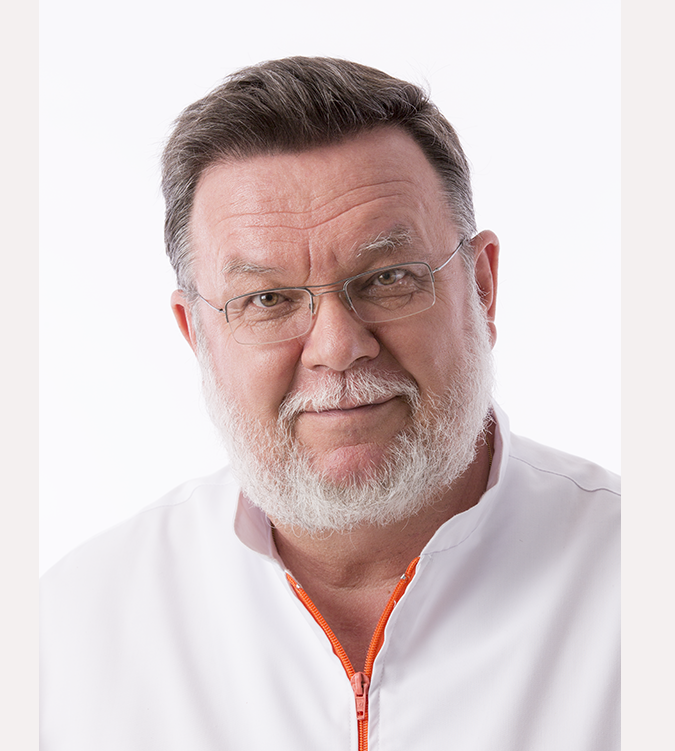 Andrzej Pilat, PT
Andrzej Pilat, PT
Andrzej Pilat is a physical and manual therapist born in Poland. He is the founder of the Myofascial Induction Therapy (MIT)™. Throughout his professional life he practiced across continents. This way, he had the opportunity to be involved in a variety of fields of physiotherapy: health care, teaching, research, management, publishing and dissemination. He is Director of the School of Myofascial Therapies Tupimek in Madrid, Spain teaching Myofascial Induction Therapy (MIT)™ from more than 30 years. Andrzej is also lecturer in master degree in different universities, and speaker at national and international conferences. He conducts research in fascial anatomy in non-embalmed cadavers. He is also author on books related to manual and myofascial therapy.
WORKSHOP DESCRIPTION:
The Fascial Net Plastination Project‘s five-year collaboration of the Fascia Research Society, the Plastinarium, and Body Worlds culminates here at FRC6 2022 in Montreal with the unveiling of FR:EIA, the world‘s first human, whole body, fascial-focused plastinate. At last, the art and science of plastination preservation is making it possible for a wider audience to see real, human fascia anatomy in 3D! Take a deep dive into fascial connectivity with members of the FNPP dissection and design team as they bring you behind the scenes in this unique, multimedia workshop. Get an in-depth view of the fascial distinctions and continuities highlighted in the FNPP plastinates and find out why they were selected for inclusion in the final design. Improve your spatial understanding and get clarity on fascial tissue relationships. Make the connection between anatomy, research, and clinical application by feeling living fascia through hands-on demonstration and movement participation segments. Learn why plastination is uniquely suited for studying fascial anatomy, and what problems still remain to be solved. Be part of the conversation, talking though the challenges of attempting to truthfully express the human fascial system separately, when its very nature is that of connection. The work of the FNPP will likely challenge, change, and enhance perceptions about the fascial system. Join the collaboration by offering your insights and inspirations gained from the FNPP and join forces with us to continue sharing this ground breaking project worldwide.
WORKSHOP PRESENTER(S):
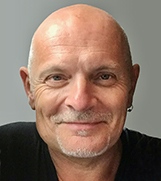 Gary Carter, Lead Dissector & Designer/FNPP; Founder/ Natural Bodies
Gary Carter, Lead Dissector & Designer/FNPP; Founder/ Natural Bodies
Gary Carter, KMI, IASI, YTTC, BAWLA, LTDip, has served as the lead volunteer dissector and designer in the creation of FR:EIA, a three-year project of the Fascial Net Plastination Project (FNPP) producing the world‘s first, whole body, fascia-focused plastinate. Gary coordinated the project‘s complex task of putting fascia in the foreground while ensuring both anatomical accuracy and esthetic beauty through each stage of her development. Gary owns and operates Natural Bodies in Brighton, England, is head of the Living Anatomy curriculum for the Craniosacral Training Educational Trust, and runs workshops and fascial anatomy trainings for osteopathic, physiotherapy, and Yoga and Pilates teacher training schools in Europe, South America, and India. He is co-producer of Fascia in a NEW LIGHT: the Exhibition in Berlin at the FRC5, and is a contributing author for Movement Integration (Lotus Publishing 2020), Yogagenda (2017), YOGA Magazine (Sept 2019), and Yoga & Health Magazine (Sept 2003).
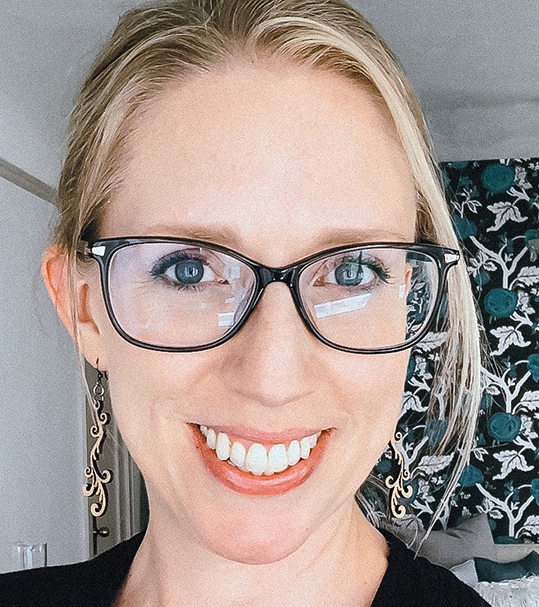 Rachelle Clauson, BCTMB Dissector & Photographer/ FNPP; Private Practice/ Flourish Bodywork
Rachelle Clauson, BCTMB Dissector & Photographer/ FNPP; Private Practice/ Flourish Bodywork
Rachelle Clauson, BS, BCTMB co-produced Fascia in a NEW LIGHT: the Exhibition in Berlin at the FRC5 which debuted the world‘s first human fascia plastinates. She serves on the Fascia Research Society‘s Fascial Net Plastination Project (FNPP) Committee and has worked as a volunteer dissector, photographer, videographer, writer, and social media coordinator for the FNPP since its inception in 2017. Rachelle‘s passion for supporting the FNPP stems from her love of understandable, visually rich representations of human anatomy to help educators better convey fascia‘s organization and function. Rachelle is a board certified massage therapist, owner of Flourish Bodywork in San Diego, CA, and co-director of AnatomySCAPES where she teaches gross anatomy workshops through a fascial system lens, designed for touch therapists. She is a contributing author for Fascia, Function, and Medical Applications (CRC Press, 2021), The Myofascial System in Form and Movement (Handspring Publishing, 2022), and Massage & Bodywork Magazine (Sept/Oct 2018).
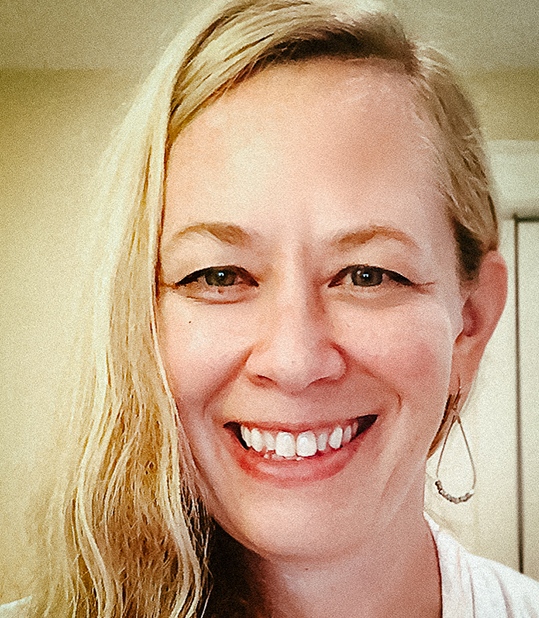 Laurice (Lauri) D. Nemetz
Laurice (Lauri) D. NemetzLauri seeks to find interdisciplinary connections from artistic to anatomical. She is an Adjunct Associate Professor at Pace University and a 2020 Pace President‘s Award honoree for Outstanding Contribution as well as a Visiting Associate Professor Dept. of Physical Medicine and Rehabilitation at Rush Medical College/Rush University (2021-2022). In addition, she is a Licensed Creative Arts Therapist (NY State), a member of the American Association for Anatomy, a board-certified Dance/Movement Therapist, a certified yoga teacher (E500) and certified yoga therapist (CIAYT). She was past faculty for Anatomy Trains® and AT Dissections (2011-2021) and currently is an independent dissector with several projects including the Fascial Net Plastination Project (FNPP), KNMLabs, and Rush Medical. She is ever curious and enjoys sparking conversation and new ways of thinking and moving. Her writing includes The Myofascial System in Form and Movement (Handspring Publishing, 2022).
WORKSHOP DESCRIPTION:
This dynamic workshop will educate the audience on the utilization of percussion massagers with focus to target the weakened tissue (fascia or muscle body). Conventional use of this device, which is rapidly growing in popularity, focuses on the tight and/or short myofascial group. But what about the reciprocal group? This duality is the simplest form of the Reciprocity integral/ reciprocity matrix / mechanical balancing equation about an articulation pivot – any excess stiffness at agonist may be considered to have a matching excess compliance at an antagonist. The workshop will educate the audience on the importance of this balance, how to identify an imbalance, how to device a treatment strategy with the percussion massager approach, and how to optimize this treatment strategy.
WORKSHOP PRESENTER(S):
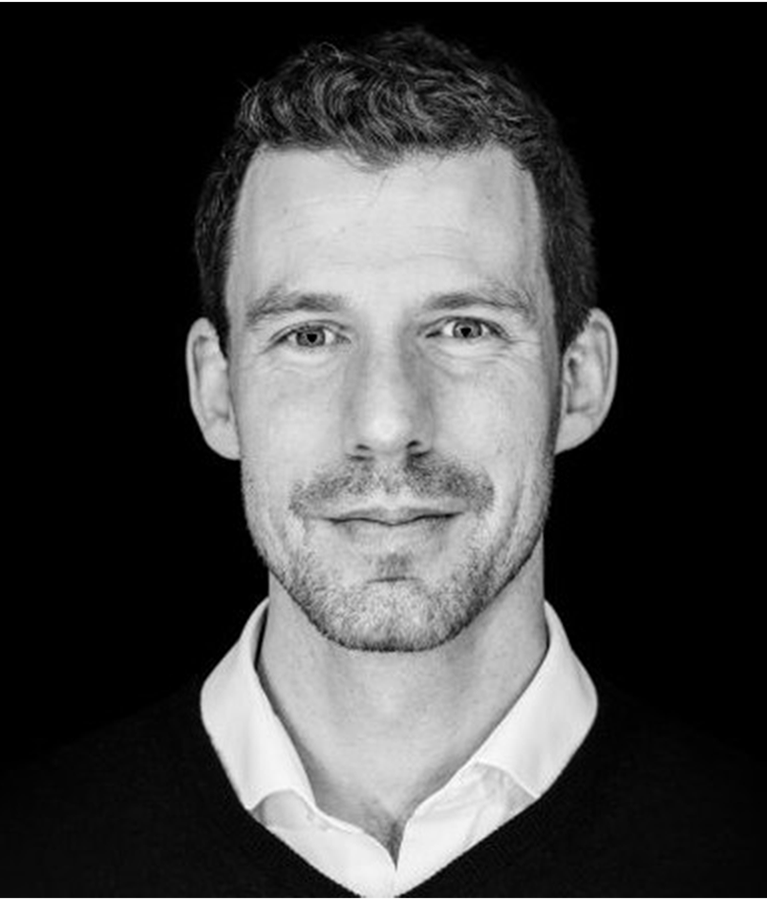 Mark Driscoll P.Eng., Ph.D. Professor, McGill University
Mark Driscoll P.Eng., Ph.D. Professor, McGill University
Mark Driscoll, Eng. PhD., is a Professor of Mechanical Engineering at McGill University, in Montreal, Canada. His published research focuses on the biomechanics of the spine from the perspective of devising an improved understanding of stability, diagnostics, and/or treatments – having a particular focus on the involvement of soft tissue such as fascia. He chaired the scientific committees of the 2018 and 2022 Fascia Research Congresses and was elected as the first President of the Fascia Research Society in 2020. Dr. Driscoll is also the Natural Sciences and Engineering Research Council of Canada Chair for Design Engineering for Interdisciplinary Innovation of Medical Technologies. As the founder and director of the Musculoskeletal Biomechanics Research Lab at McGill, Dr. Driscoll has received many awards for his research and corresponding inventions which serve in assisting people with disabilities around the world.
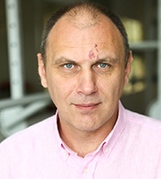 Leonid Blyum M.Sc. Advanced Biomechanical Rehabilitation
Leonid Blyum M.Sc. Advanced Biomechanical Rehabilitation
Leonid Blyum, M.Sc studies the structure and the functioning of the musculoskeletal system (biomechanics), and more specifically of the spinal disorders and joint deformities. Through study and experience, he developed the belief that musculoskeletal deformities could be well treated with a quasi-static manual therapy. Quasi-static means with long and gentle pressure (as opposed to often powerful manipulations). From 1996 to 2000 he taught applied biomechanics and manual therapy to postgraduate doctors in Moscow. Meanwhile his personal work in the field of scoliosis and other musculoskeletal deformities proved the efficiency of the quasi-static method. His research field expanded to the rehabilitation of patients with neurological damage (usually brain damage) suffering from general motor disorders and deformities. Again results were conclusive. Our method – Advanced Biomechanical Rehabilitation – necessitates daily work. Therefore he decided to teach this technique to the parents of the CP children. ABR satellites are now operating in many countries.
Half Day Workshops - Afternoon
WORKSHOP DESCRIPTION:
This workshop will examine how recent studies of fascial anatomy and histology regarding superficial, deep and visceral fasciae can offer guidelines for therapists when choosing the most appropriate form of therapeutic touch to be applied in each individual dysfunction. The signs and symptoms of a superficial fascia dysfunction differ from those of a deep fascia dysfunction. Likewise, the presentation of a predominately visceral fascia dysfunction has particular characteristics. At the same time, the anatomy, histology and specific relationships of these layers are quite different. For example, superficial fascia, which lies within the hypodermis, is closely related with the autonomic system, lymphatic drainage, superficial nerves and vessels and exteroception, whereas deep fascia consists of aponeurotic and epimysial-type fascia and is more closely related to muscle recruitment and proprioception. The presenters will draw on their extensive experience as physiotherapists and
practitioners of the Fascial Manipulation®- Stecco method®, as taught by Luigi Stecco, to explain how science can guide therapists in choosing which type of touch is indicated in different fascial dysfunctions. Following an overview of the anatomical characteristics and clinical presentations of some common superficial, deep and visceral fascia dysfunctions, the clinical rationale applied in several case studies will be
discussed.
WORKSHOP PRESENTER(S):
 Julie Ann Day, PT
Julie Ann Day, PT
Julie Ann Day is a physiotherapist who initially trained in Australia but she has been living and working in Italy since 1984. In 1998 she began studying Fascial Manipulation® directly with Luigi Stecco, the founder of the Fascial Manipulation®-Stecco method® (FM). An authorized teacher of FM since 2002, Julie has since taught Level I & Level II courses in 9 different countries and has also held workshops and key-note presentations on this subject at international conferences. Author of several scientific papers concerning the concepts and applications of FM, since 2003 she has also translated eight text books by Luigi Stecco from Italian to English. In 2018, Julie Ann Day edited a book called ‘Fascial Manipulation®-Stecco method®: the practitioner’s perspective’ (Handspring Publishing) that highlights the impact that the FM approach has had on modifying the clinical practice of an international group of 16 highly experienced practitioners within different disciplines, such as physiotherapy, osteopathy, chiropractic and massage therapy.
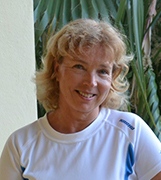 Tiina Lahtinen-Suopanki, Physical Therapist, Orton Rehabilitation Center
Tiina Lahtinen-Suopanki, Physical Therapist, Orton Rehabilitation Center
Tiina Lahtinen-Suopanki graduated as a physiotherapist from the Hgin IV School of Health Care in the spring of 1979 and has been working full-time since then. She studied orthopedic manual therapy in Oslo, Norway as a student of Olaf Evlenth and Freddy Kaltenborg in 1981-83 and 1985-87 and completed her OMT degree there. She has been an instructor in the in-service training of physiotherapists since 1984, teaching orthopedic manual therapy, therapeutic training, neurodynamics, training in preparation for assignments (back and shoulder pain). She completed her bachelor's degree in health sciences at the University of Eastern Finland in 2014, with a major in sports medicine.
Tinna started studying fascination manipulation, developed by Luigi Stecco, in Zugliano, Italy, in June 2011. As a result of his intensive studies, practice, and Julie Day‘s inspiring and wise tutoring, she graduated as a Fascian Manipulation Teacher on September 27, 2014.
WORKSHOP DESCRIPTION:
We are fascia enthusiasts who are dedicated to sharing fascia knowledge with other science communities, clients, and the general public. As book authors, article writers, clinicians, educators, and more, our collective background has a common theme of communication. Communicating science with authenticity and clarity is a powerful skill set to possess. Sharing information about fascia to different audiences with the desire to inspire and educate can be successful by learning different communication styles. We will be working with several models,
including improvisation, to improve dialog between parties in order to help those involved in fascia science to effectively communicate the latest in fascial research.
WORKSHOP PRESENTER(S):
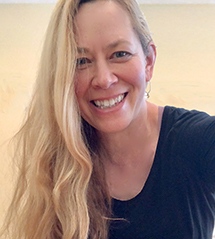 Laurice (Lauri) Nemetz MA, BC-DMT, LCAT, ERYT500, CIAYT Anatomy Trains (r) faculty; Adjunct Associate Professor, Pace University
Laurice (Lauri) Nemetz MA, BC-DMT, LCAT, ERYT500, CIAYT Anatomy Trains (r) faculty; Adjunct Associate Professor, Pace UniversityLauri seeks to find interdisciplinary connections from artistic to anatomical. She is an Adjunct Associate Professor at Pace University and a 2020 Pace President‘s Award honoree for Outstanding Contribution as well as a Visiting Associate Professor Dept. of Physical Medicine and Rehabilitation at Rush Medical College/Rush University (2021-2022). In addition, she is a Licensed Creative Arts Therapist (NY State), a member of the American Association for Anatomy, a board-certified Dance/Movement Therapist, a certified yoga teacher (E500) and certified yoga therapist (CIAYT). She was past faculty for Anatomy Trains ® and AT Dissections (2011-2021) and currently is an independent dissector with several projects including the Fascial Net Plastination Project (FNPP), KNMLabs and Rush Medical. She is ever curious and enjoys sparking conversation and new ways of thinking and moving. Her writing includes The Myofascial System in Form and Movement (Handspring Publishing, 2022).
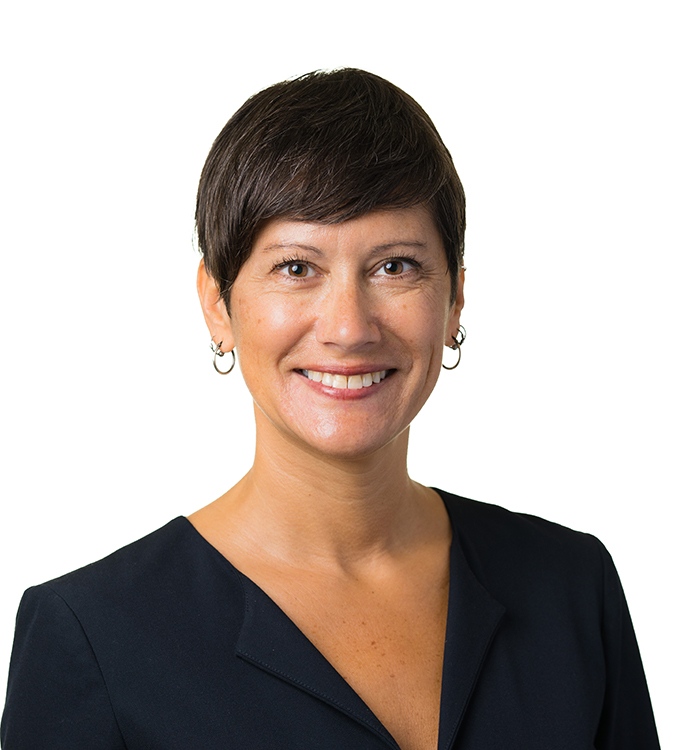 Rebecca Pratt, PhD
Rebecca Pratt, PhD
Dr. Rebecca Pratt is currently a Professor of Anatomy at Oakland University William Beaumont School of Medicine in Rochester, Michigan, US. She completed her PhD in Cancer Cell Biology from Purdue University in Indiana, US. She has been recognized by the American Association for Anatomists for excellence in teaching, scholarly activity, and service to the discipline. Her current adventure has her teaching clinical gross anatomy and medical histology across undergraduate years 1, 2 and 4. She is also the Musculoskeletal System course director. Dr. Pratt shares her excitement about fascia every chance she gets. For fun she teaches as an adjunct professor at Weill Cornell School of Medicine, St. George University School of Medicine, and performs in the Oakland Symphony Orchestra Chorale.
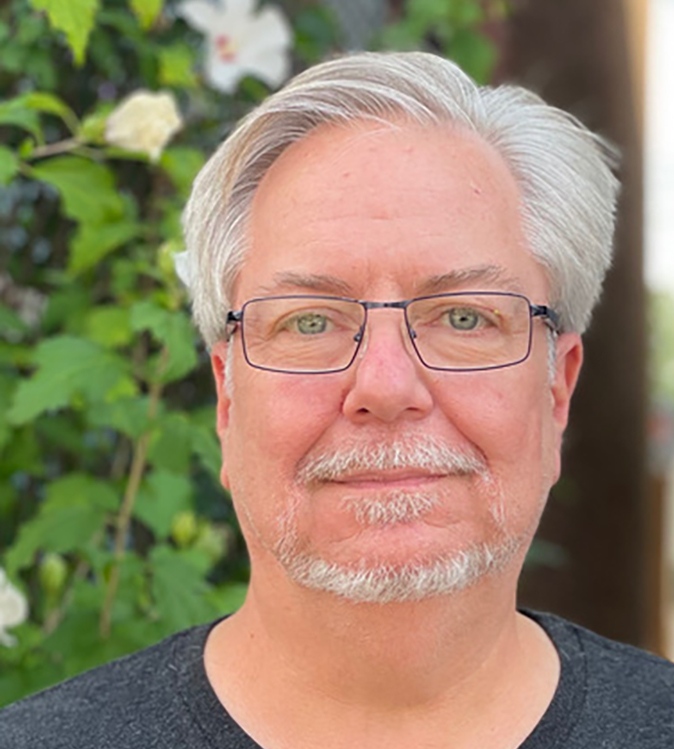 David Lesondak
David Lesondak
David Lesondak. BCSI, ATSI, FST is an Allied Health Member in the Department of Family and Community Medicine at the University of Pittsburgh Medical Center (UPMC). He is the author of the bestselling Fascia – what is is and why it matters (Handspring Publishing) now available in 9 languages. He followed that up, as editor, with Fascia, Function, and Medical Applications (CRC Press). Along with a robust private practice at UPMC‘s Center for Integrative Medicine, he teaches manual therapy and lectures worldwide. In 2021 he was asked to join the Executive Committee for the International Consortium on Manual Therapies and launched his own podcast, BodyTalk with David Lesondak.
WORKSHOP DESCRIPTION:
The workshop will be divided into 2 parts - a lecture part and a hands-on practical portion using ultrasound. There will be a special focus on hypermobility and Ehlers-Danlos syndrome as well as palpatory techniques using ultrasound. We will start the lecture part with an in-depth review the pathophysiology and imaging findings in the scientific literature regarding trigger points and fascia derived pain with a particular focus on ultrasound and elastography. We will review relevant literature and associated imaging technique, findings, anatomy regarding commonly studied regions: sternocleidomastoid, iliotibial tract, thoracolumbar fascia, and plantar fascia. We will discuss how interventions across disciplines influence these findings (i.e. manual therapy, modality, Fascial Manipulation, massage, electrotherapy laser, stretching, and exercise.
For the practical portion, we will review the basics of imaging techniques (i.e. positioning, anisotropy, high frequency probe, elastography, echogenicity). Konica Minolta will provide 4 Sonimage® HS-1, Konica Minolta Corporation, Japan and L18-4 transducers. We will practice examination of the sternocleidomastoid, iliotibial tract, thoracolumbar fascia, and plantar fascia. For each body region, we will practice the use of ultrasound and strain elastography in the longitudinal plane for ease of visualization for novice ultrasound users. Deep fascia will be examined for thickness and echogenicity. Muscle will be assessed using B-mode ultrasound for echogenicity and elastography for stiffness. Fascial glide will be assessed qualitatively.
WORKSHOP PRESENTER(S):
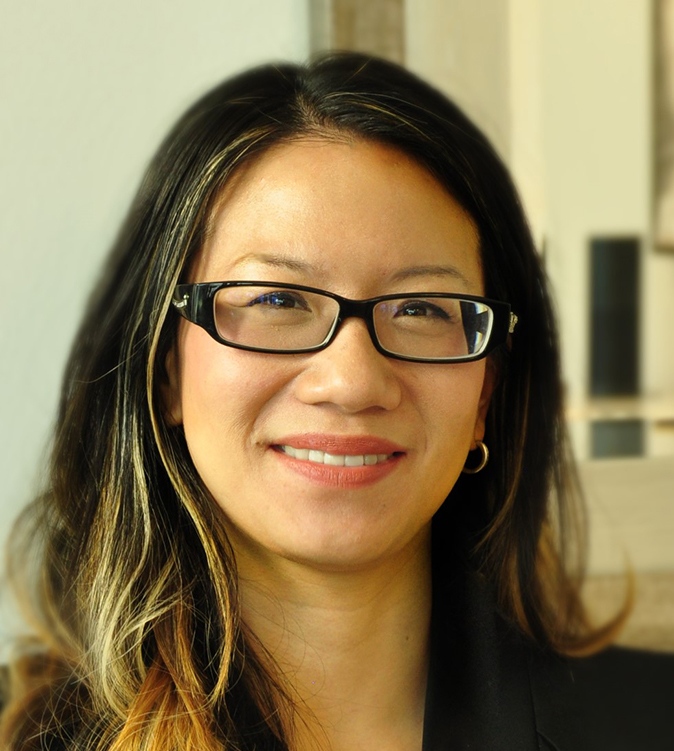 Tina Wang MD, Assistant Professor / Loma Linda University School of Medicine
Tina Wang MD, Assistant Professor / Loma Linda University School of Medicine
Dr. Tina J Wang is a board-certified Physical Medicine & Rehabilitation specialist physician with a special focus on Ehlers Danlos Syndrome (EDS) and Hypermobility Spectrum Disorders. She is active with the EDS Society and conducts research using ultrasonography on fascial changes in this population. Dr. Wang is Assistant Professor of Medicine for University of California Riverside and Loma Linda School of Medicine and is core faculty for the musculoskeletal curriculum including the use of ultrasound-based diagnosis and interventions. Her published research focuses on ultrasound characteristics of fascial dysfunction to improve clinical understanding, diagnostics, and treatments of myofascial pain syndromes and EDS.
WORKSHOP DESCRIPTION:
The first 5 International Fascia Research Congresses have shown the interest that fascia holds for manual therapies by its tensional and architectural organization and its somato-psychical structure. They also have shown that fascia has a rich innervation, which opens perspectives to better understanding mechanisms of pain. Authors have suggested that fascial dysfunctions may be involved in proprioceptive, nociceptive, and interoceptive disorders.
Fibromyalgia is a chronic pain syndrome, characterized by widespread pain, sleeping problems, and chronic fatigue. The implication of fascia in fibromyalgia is regularly mentioned by researchers and practitioners. Recent studies have given clues as to the efficiency of fascial treatment approach for fibromyalgia.
Danis Bois Method (DBM) Fasciatherapy is a body-mind approach which addresses the fascia and its connection with the mind. Using a deep gentle touch, DBM Fasciatherapy targets specifically the fascial tonus. It requires specific conditions, particularly a touch with a relational dimension.
Research carried out using DBM Fasciatherapy has shown an effect on vascular stress, anxiety, recovery after physical effort and a modification of the patient’s perception of their own body and their psycho-emotional states. A specific research studied the effects on people suffering from fibromyalgia.
WORKSHOP PRESENTER(S):
 Isabelle Bertrand, Phd, Director of TMG Fascia Concept
Isabelle Bertrand, Phd, Director of TMG Fascia Concept
Isabelle Bertrand, PhD, PT is founder and the director of TMG Concept, the institute for DBM Fasciatherapy education (France). She has been training physiotherapists in France for 15 years, particularly the application of DBM Fasciatherapie in pediatric pathology, the relationship of a person to the body in obesity, and in the field of therapeutic education. She is a member of the scientific committee of the CERAP laboratory at Fernando Pessoa University in Porto (Portugal). She holds a PhD in Social Sciences in the field of psychology and her thesis was about the contribution the educative somatic approaches offer in management of obese patients. She had many presentations and lectures in congresses and published several articles.
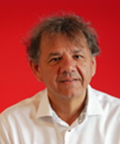 Christian Courraud PT, PhD Director of CERAP laboratory
Christian Courraud PT, PhD Director of CERAP laboratory
Christian Courraud,PT, Phd is the Director of the Center for Applied Research and Study in Perceptual Psychoeducation (CERAP) and Visiting Adjunct professor at the Universidad Fernando Pessoa, Portugal. He is founder of TMG Concept, institute for DBM Fasciatherapy education (France). He is the author of books and many articles on fascia and Fasciatherapy, and gave several talks and workshops at previous FRC (2015, 2018). He is specialized in DBM Fasciatherapy and its various applications, with particular attention to the field of sports and the treatment of musculoskeletal disorders. A large part of his activity has involved developing research activities on the therapeutic effects of the specific touch used in DBM Fasciatherapy.
 Cyril Dupuis PT, MSc, Research assistant at CERAP laboratory
Cyril Dupuis PT, MSc, Research assistant at CERAP laboratory
Cyril Dupuis, PT, MSc, is co-founder of TMG Concept, institute for DBM Fasciatherapy education (France) and of the Fascia Research Society. He has been a teacher in DBM Fasciatherapy for the last 10 years in France, Switzerland and Belgium, and is a research assistant at the CERAP research laboratory. In his field he is specialized in chronic pain and in fibromyalgia. He regularly shares his work at national and international conferences, has also published on mixed research methodology and is a member of the International Association for the Study of Pain.
WORKSHOP DESCRIPTION:
This dynamic workshop will educate the audience on the utilization of percussion massagers with focus to target the weakened tissue (fascia or muscle body). Conventional use of this device, which is rapidly growing in popularity, focuses on the tight and/or short myofascial group. But what about the reciprocal group? This duality is the simplest form of the Reciprocity integral/ reciprocity matrix / mechanical balancing equation about an articulation pivot – any excess stiffness at agonist may be considered to have a matching excess compliance at an antagonist. The workshop will educate the audience on the importance of this balance, how to identify an imbalance, how to device a treatment strategy with the percussion massager approach, and how to optimize this treatment strategy.
WORKSHOP PRESENTER(S):
 Mark Driscoll P.Eng., Ph.D. Professor, McGill University
Mark Driscoll P.Eng., Ph.D. Professor, McGill University
Mark Driscoll, Eng. PhD., is a Professor of Mechanical Engineering at McGill University, in Montreal, Canada. His published research focuses on the biomechanics of the spine from the perspective of devising an improved understanding of stability, diagnostics, and/or treatments – having a particular focus on the involvement of soft tissue such as fascia. He chaired the scientific committees of the 2018 and 2022 Fascia Research Congresses and was elected as the first President of the Fascia Research Society in 2020. Dr. Driscoll is also the Natural Sciences and Engineering Research Council of Canada Chair for Design Engineering for Interdisciplinary Innovation of Medical Technologies. As the founder and director of the Musculoskeletal Biomechanics Research Lab at McGill, Dr. Driscoll has received many awards for his research and corresponding inventions which serve in assisting people with disabilities around the world.
Leonid Blyum M.Sc. Advanced Biomechanical Rehabilitation
